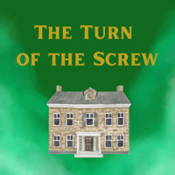
Overview
Synopsis
Written in 1954, The Turn of the Screw is the last of Benjamin Britten’s chamber operas, based on the gothic horror novella of the same title. A sheltered young governess is sent to care for two children in a country house called Bly. At first, her new post seems perfect--the children, Miles and Flora, are positively angelic, and the estate is beautiful. Soon, however, the governess becomes suspicious as apparitions of a man and a woman begin to appear around the house and the grounds. The housekeeper informs her that they are the ghosts of Quint, the manservant, and Miss Jessel, the former governess. As the governess feels an increasing sense of evil surrounding the house, the ghosts appear more often and ever closer to the children, intending to possess them as the governess tries desperately to protect her young charges.
A tale of the struggle of good and evil, the corruption of innocence, and the supernatural, The Turn of the Screw is a terrifying and brilliantly composed thriller that has been called one of the most dramatically compelling British operas of all time.
Show Information
Context
The Turn of the Screw was written in an incredibly short four months in 1954. Britten had known of Henry James’s novella of the same name (published in 1898) for years and was familiar with it, and so it was a natural fit for his next project. Of particular interest to Britten was crafting the two different musical worlds of the opera; the more straightforward and less complicated music of the mortals in the story contrasts strongly with the atonal but nonetheless strongly compelling
to read the context for The Turn of the Screw and to unlock other amazing theatre resources!Plot
ACT ONE
A narrator appears in front of the curtain and explains the events leading up to the first scene. The Governess, an “untried, innocent” woman who remains nameless throughout the opera, has been employed to the care of two young children who live in an East English country house called Bly. Their former governess having “gone,” they lived only with an old housekeeper. Their handsome and charming guardian, their only relative, employed the governess because he claimed to be too busy
to read the plot for The Turn of the Screw and to unlock other amazing theatre resources!Characters
| Name | Part Size | Gender | Vocal Part |
|---|---|---|---|
|
Lead |
Male |
Treble/Boy Soprano |
|
|
Lead |
Female |
Soprano |
|
|
Lead |
Female |
Soprano |
|
|
Supporting |
Female |
Soprano |
|
|
Supporting |
Female |
Soprano |
|
|
Supporting |
Male |
Tenor |
|
|
Featured |
Male |
Tenor |
Songs
Act One
- Prologue (Prologue)
- Theme (orchestra)
- Scene I: The Journey (Governess)
- Variation I (orchestra)
- Scene 2: The Welcome (Governess, Mrs. Grose, Miles, Flora)
- Variation II (orchestra)
- Scene 3: The Letter (Governess, Mrs. Grose, Miles, Flora)
- Variation III (orchestra)
- Scene 4: The Tower (Governess, Quint)
- Variation IV (orchestra)
- Scene 5: The Window (Governess, Mrs. Grose, Miles, Flora, Quint)
- Variation V (orchestra)
- Scene 6: The Lesson (Governess, Miles, Flora)
- Variation VI (orchestra)
- Scene 7: The Lake (Governess, Miles, Flora, Miss Jessel)
- Variation VII (orchestra)
- Scene 8: At Night (Governess, Mrs. Grose, Miles, Flora, Quint, Miss Jessel)
Act Two
- Variation VIII (orchestra)
- Scene 1: Colloquy and Soliloquy (Quint, Miss Jessel, Governess)
- Variation IX (orchestra)
- Scene 2: The Bells (Governess, Mrs. Grose, Miles, Flora)
- Variation X (orchestra)
- Scene 3: Miss Jessel (Governess, Miss Jessel)
- Variation XI (orchestra)
- Scene 4: The Bedroom (Governess, Miles, Quint)
- Variation XII (orchestra)
- Scene 5: Quint (Miles, Quint)
- Variation XIII (orchestra)
- Scene 6: The Piano (Governess, Mrs. Grose, Miles, Flora)
- Variation XIV (orchestra)
- Scene 7: Flora (Governess, Mrs. Grose, Flora, Miss Jessel)
- Variation XV (orchestra)
- Scene 8: Miles (Governess, Mrs. Grose, Miles, Flora, Quint)
A song with an asterisk (*) before the title indicates a dance number; a character listed in a song with an asterisk (*) by the character's name indicates that the character exclusively serves as a dancer in this song, which is sung by other characters.
Monologues
Scenes
Key Terms
Sorry! We do not currently have terms for this guide.
Videos
Quizzes
Themes, Symbols & Motifs
Sorry! We do not currently have learning modules for this guide.
Quote Analysis
Sorry! We do not currently have learning modules for this guide.
